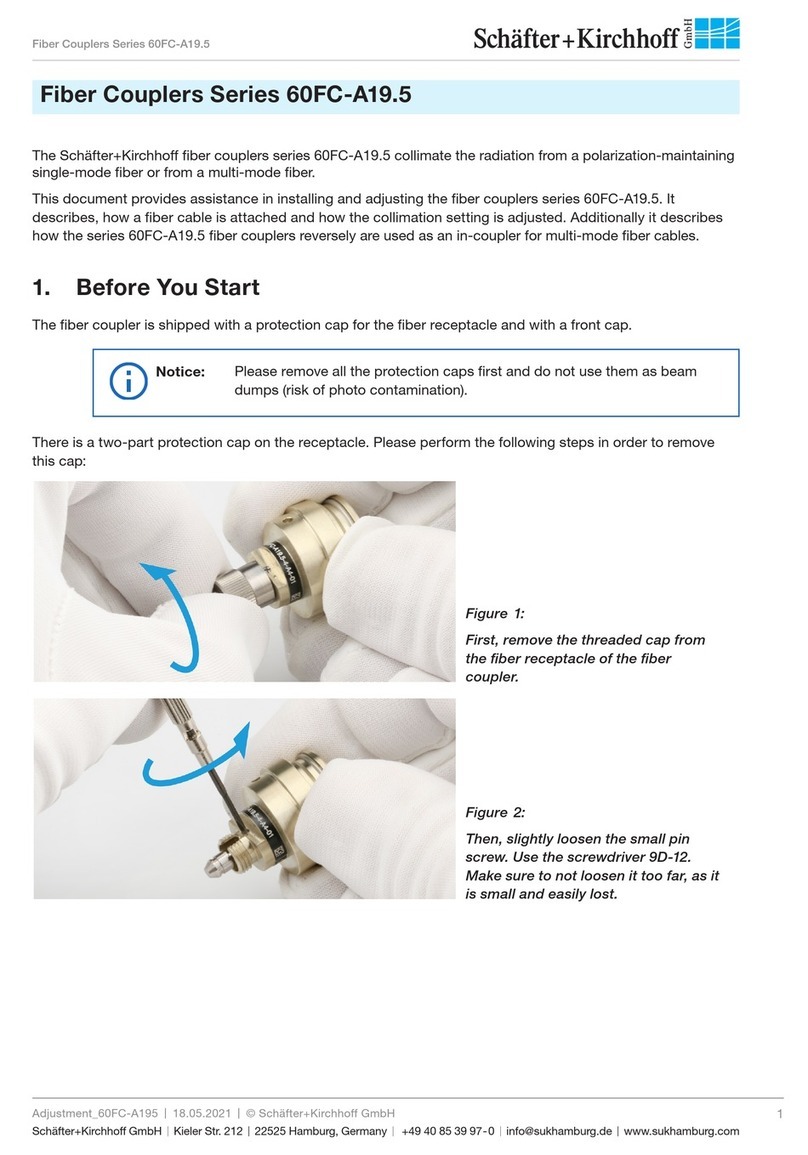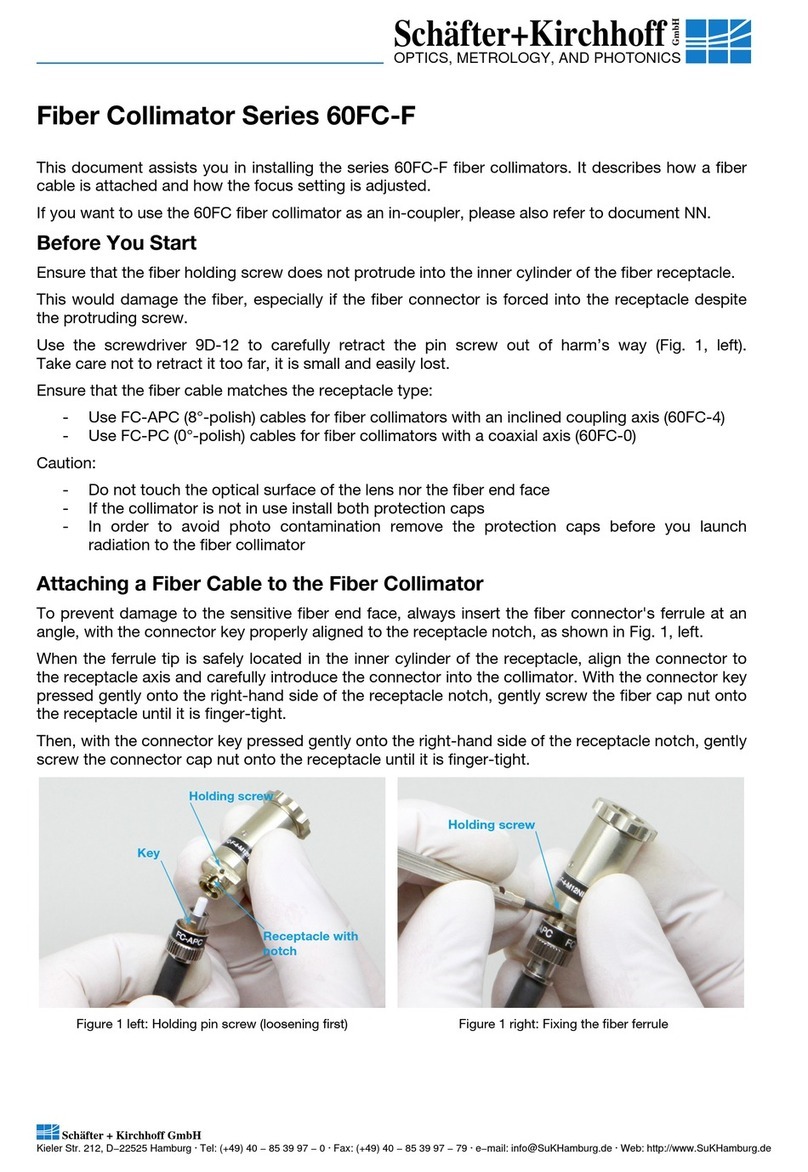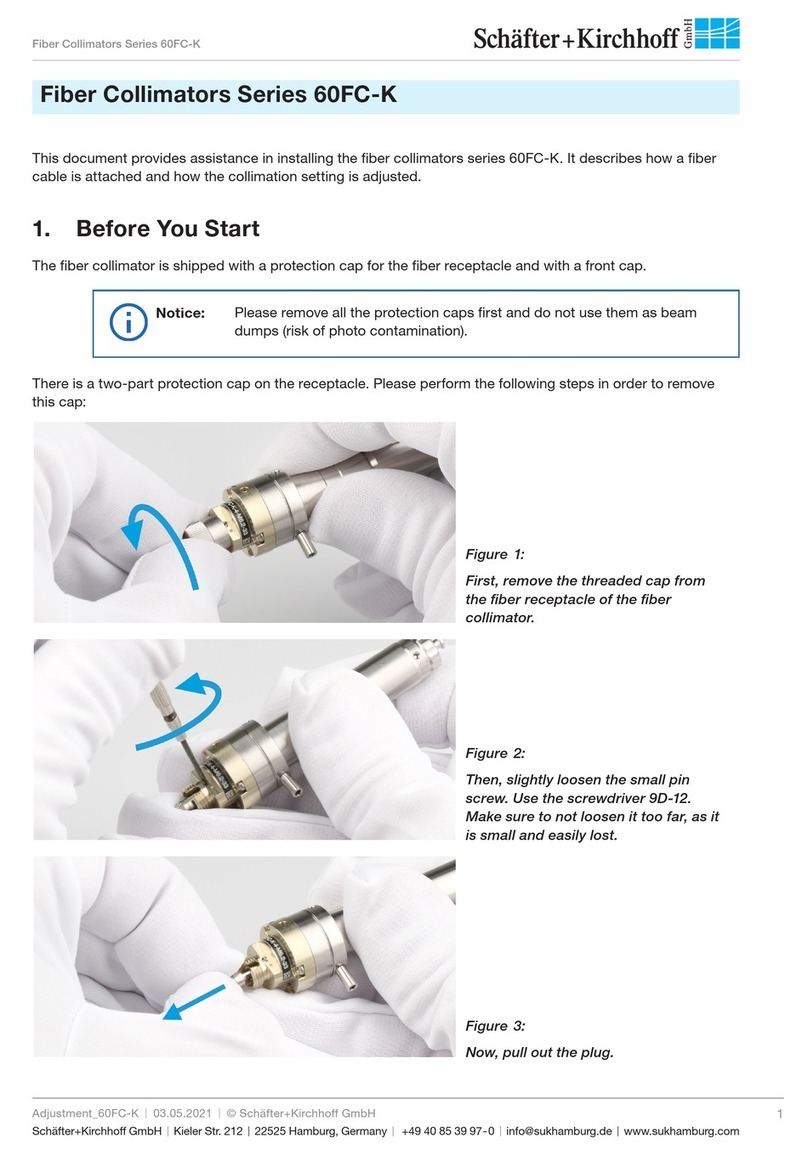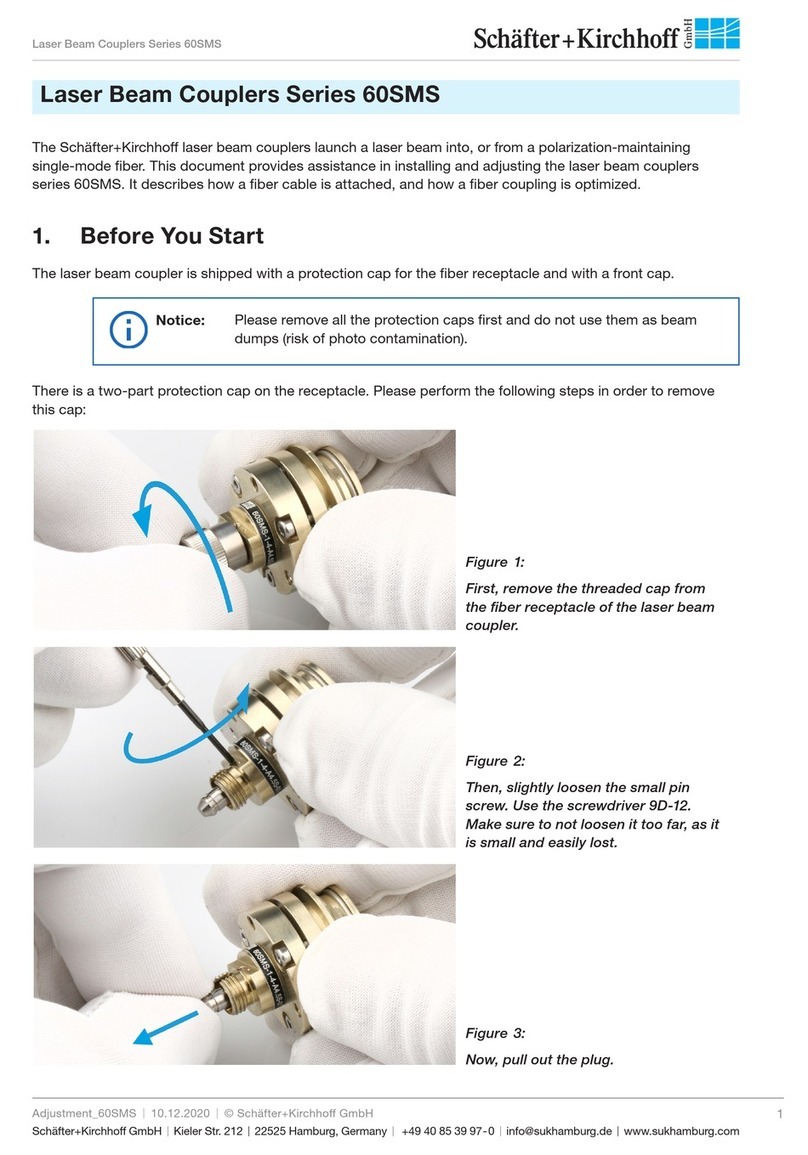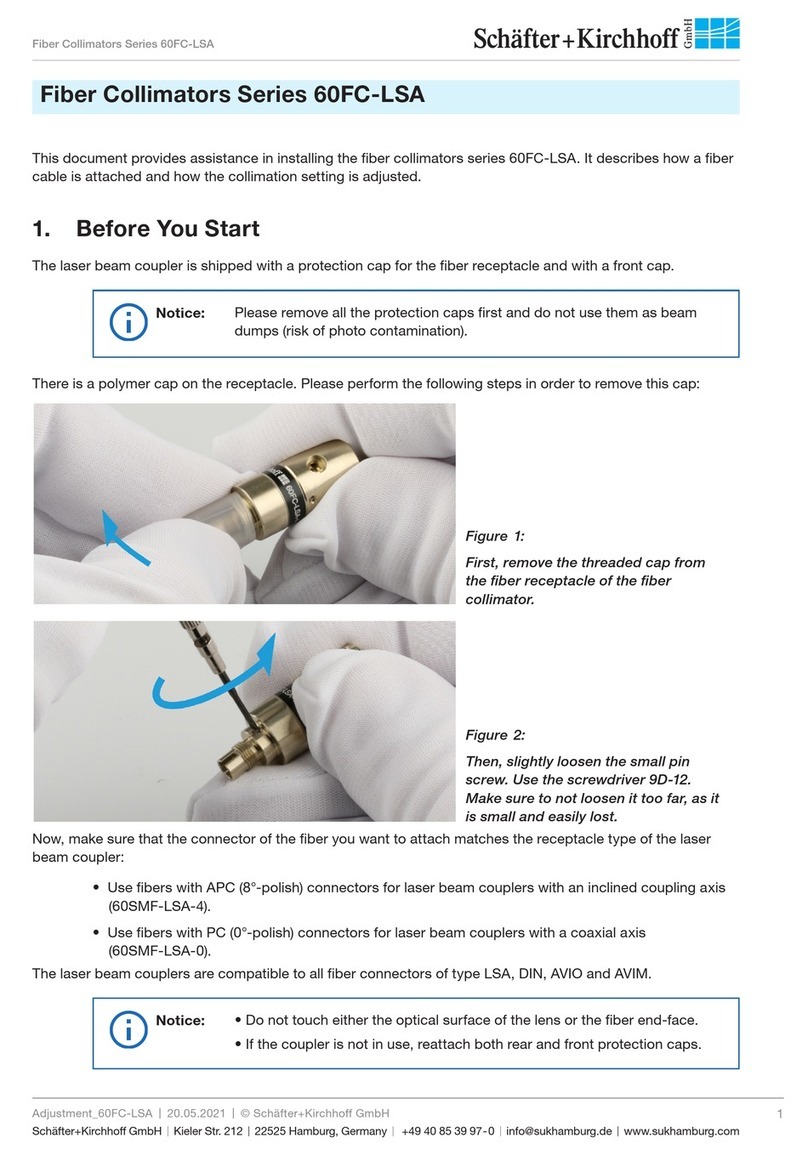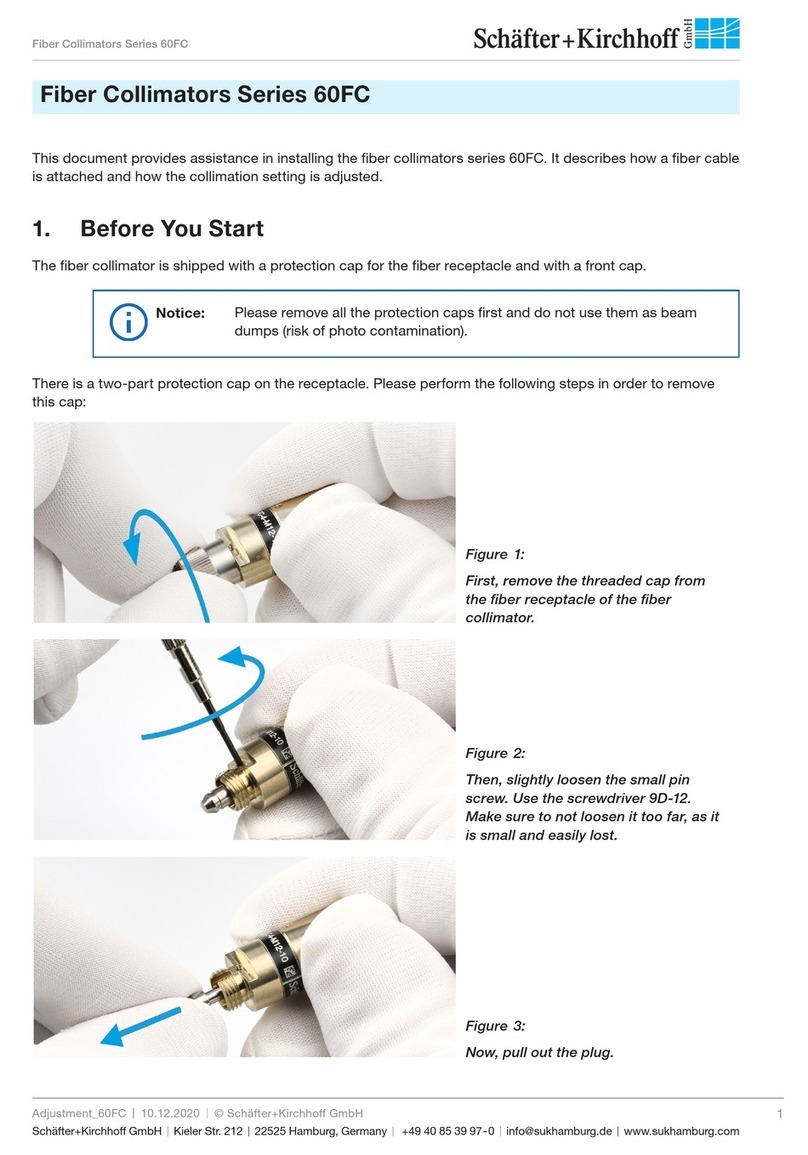
Fiber Collimators Series 60FC-T
Adjustment_60FC-T 18.12.2020 © Schäfter+Kirchhoff GmbH
Schäfter+Kirchhof
f
GmbH
Kieler
Str
.
212
22525
Hamburg,
Germany
+49
40
85
39
9
7-0 [email protected] www.sukhamburg.com4
2. Adjusting the Collimation Setting
Collimation adjustment (adjustment of the collimating lens in z-direction) is a demanding task and should be
performed preferably using a collimating telescope.
The fiber collimator is shipped pre-adjusted for the given wavelength and,
often, it is not necessary for the customer to readjust the lens position. This
is why you can skip this step in most cases.
Notice:
To check the collimation setting of the fiber collimator, couple a radiation source of appropriate wavelength into
the fiber connected to the fiber collimator.
Refer to the laser instruction manual for all instructions regarding laser
safety!
• Do not stare directly into the laser beam (which can cause permanent
damage to the eyes).
• Do not stare at the reflected beam from reflective objects.
• Do not point the laser beam to other individuals.
Caution!
There are two options for rating the collimation setting:
• For fiber collimators with a focal length f‘ >30 mm it is best to use a shearing interferometer.
• For fiber collimators with a focal length f‘ ≤30 mm you can use the following procedure as an
alternative:
Direct the beam to a target about half a Rayleigh length zRaway:
zRπ∙∅2
beam
=
2 λ∙8
Here λ is the optical wavelength and Øbeam the collimated beam diameter (1/e2level).
When correctly collimated, the laser spot diameter on a target about zR/2 away must have
approximately the same diameter such as the beam directly behind the laser beam coupler.
Additionally, make sure that there is no focused spot between the laser beam coupler and the
target at zR/2.
The lens position is adjusted by means of an eccentric key type 55EX-5.
For adjusting the lens position perform the following steps:
Figure 9:
Loosen the clamp screws fixing the
lens position by means of a screwdriver
type 50HD-15.
